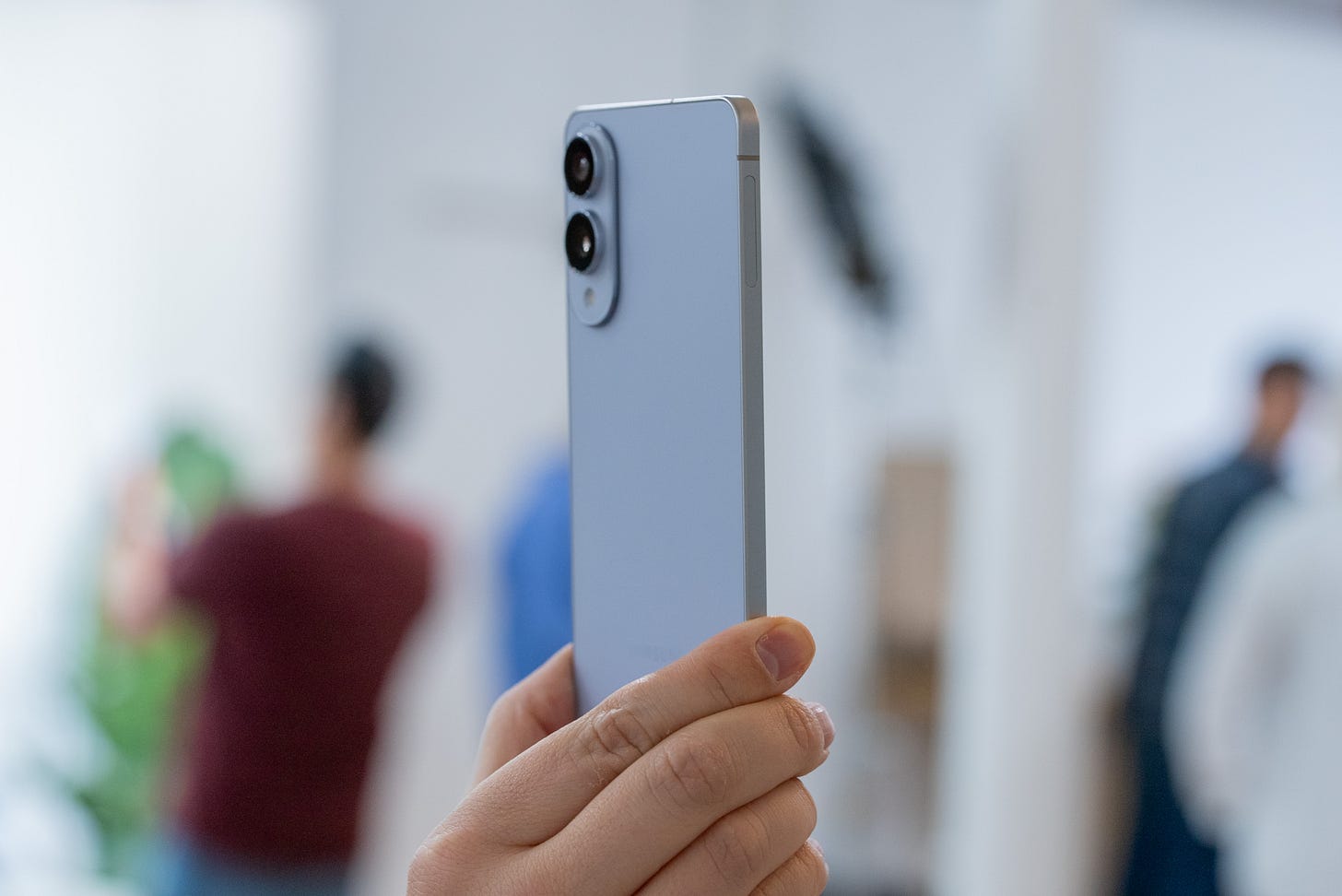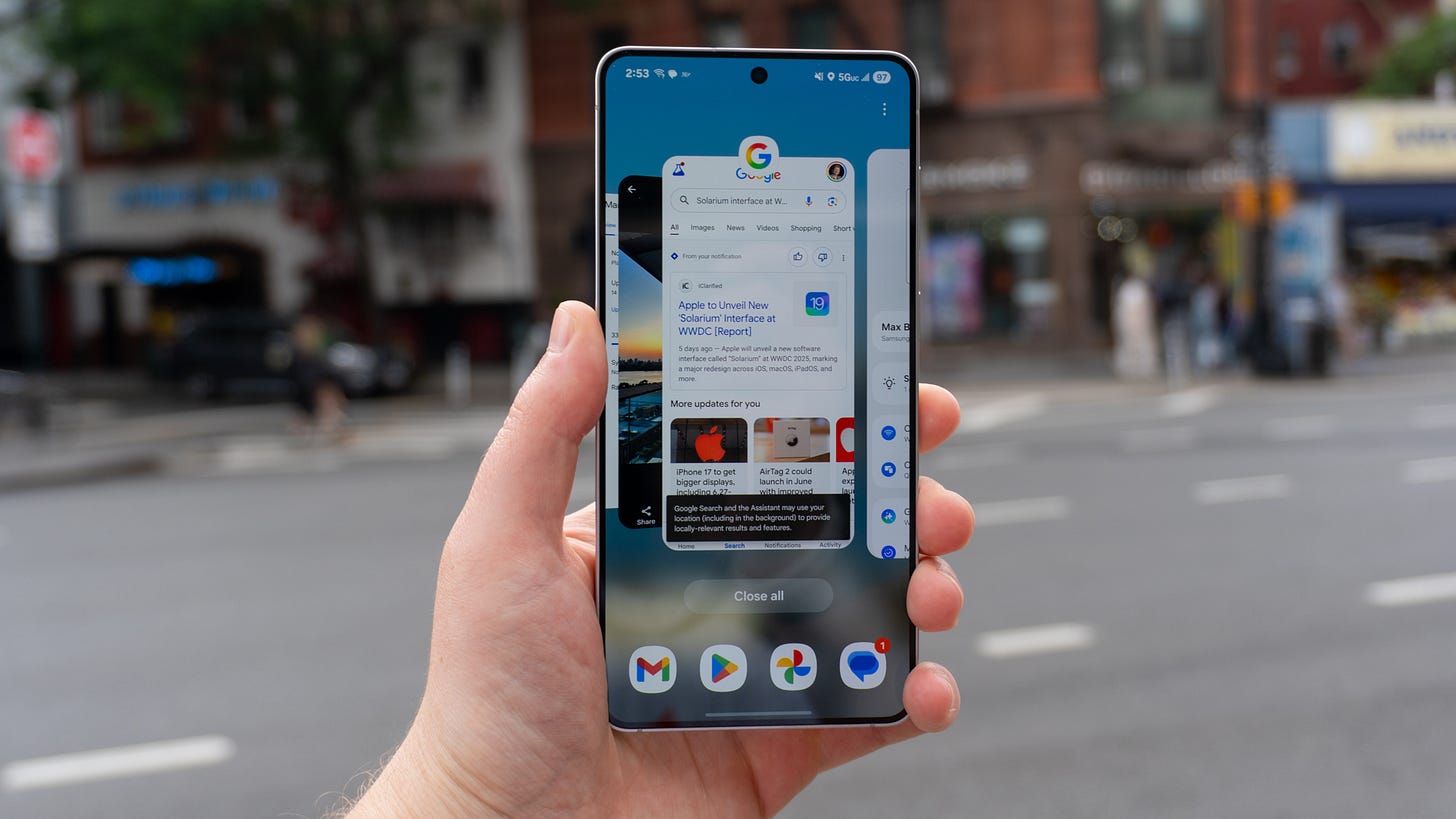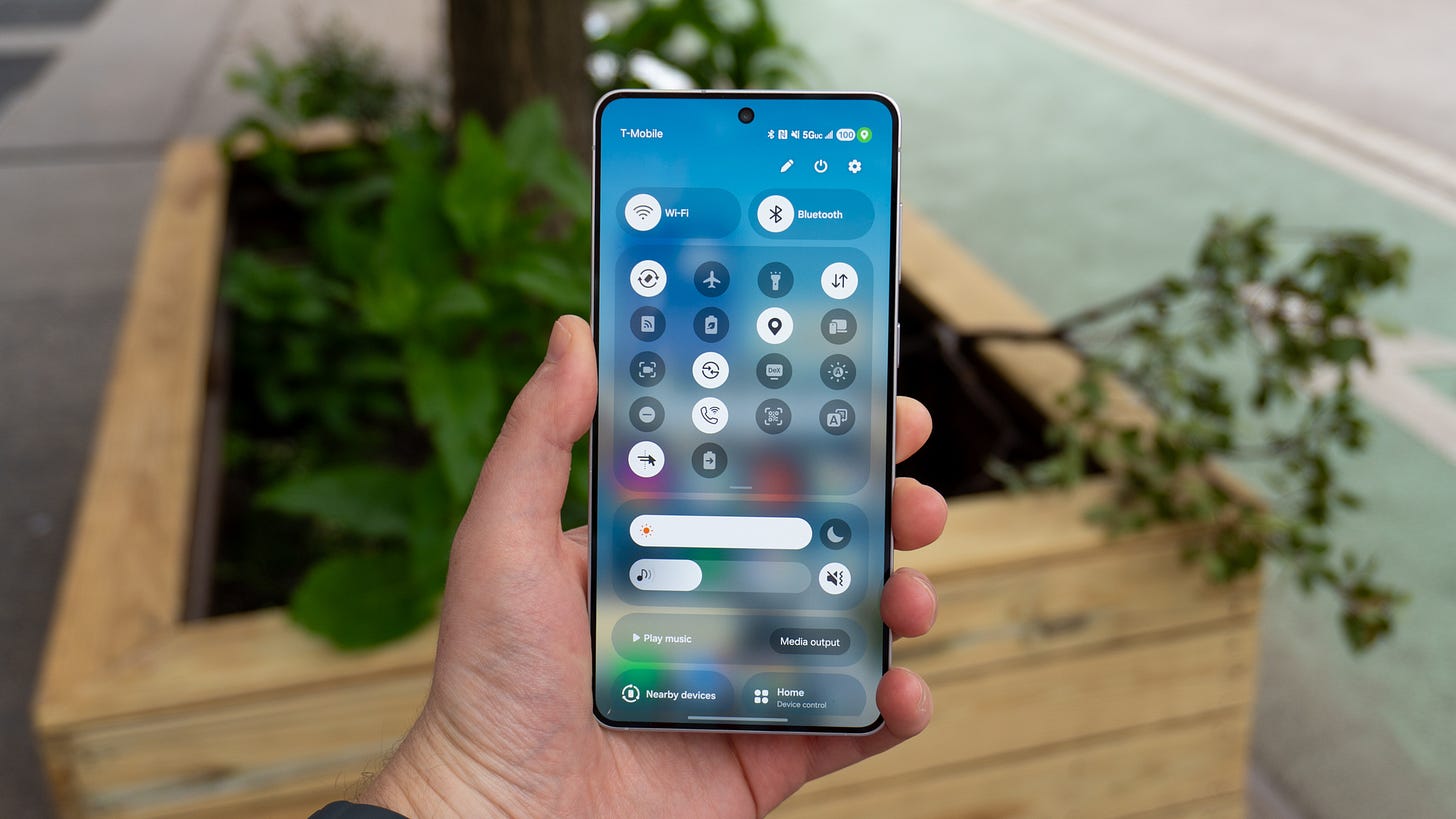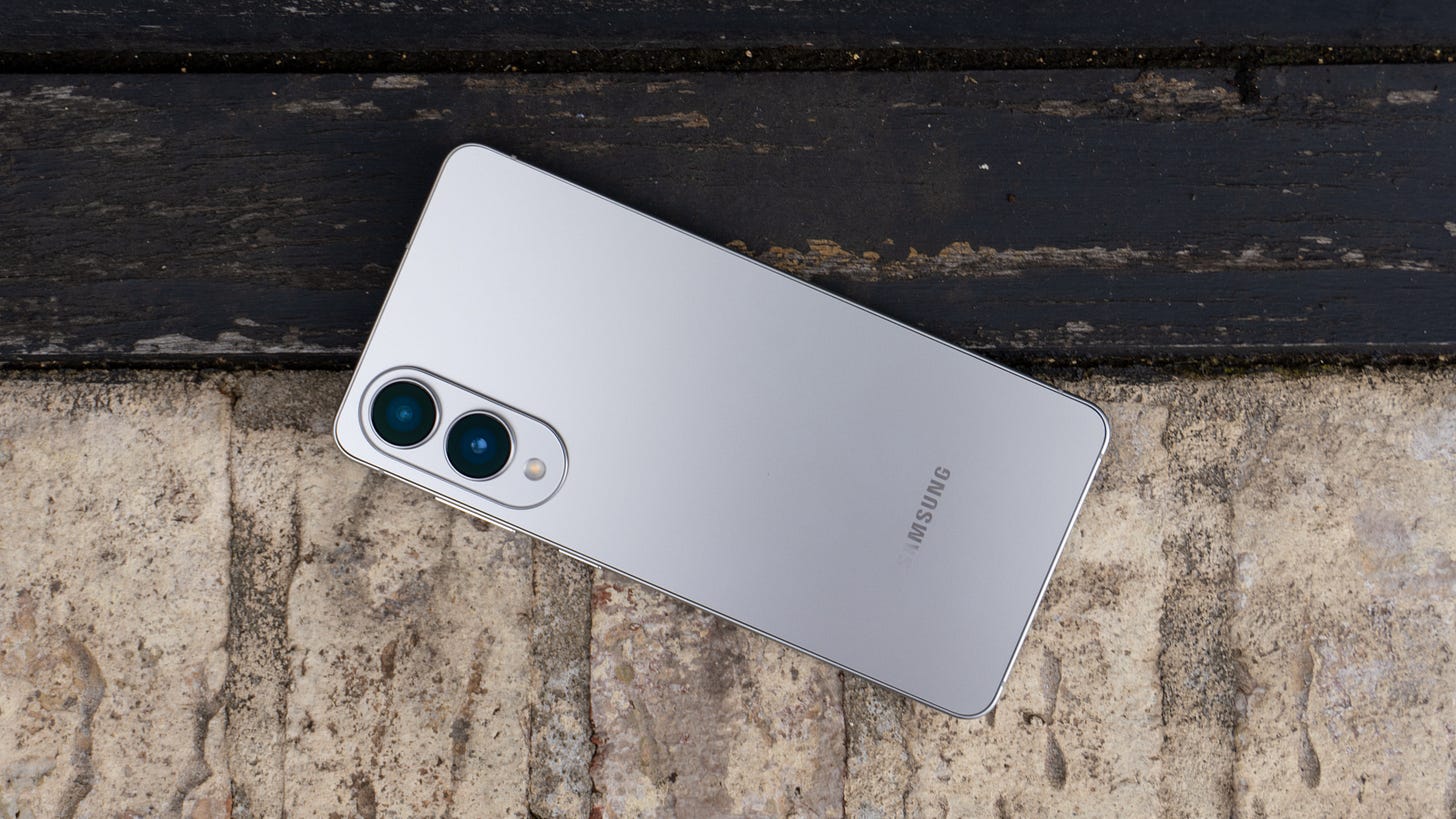Samsung Galaxy S25 Edge review: thin on design, light on features
Remarkably thin and light, but beyond vanity, the S25 Plus remains a better value
🏆 Review score: 3.5/5
✅ Pros
📏 Thin and light design is quite stunning
📱 A beautiful display
🏎️ Fast, reliable performance
🤖 Clean software with enough AI for everyone
📸 Solid cameras
❌ Cons
🪫 Battery life can’t last a day
📷 No telephoto lens
🥵 It can get warm quickly
💰 $200 more than the Galaxy S25 Plus
The Shortcut review
The Galaxy S25 Edge is one of the thinnest smartphones you can buy, and if all you want are the bragging rights that come with owning such a device, this is the phone for you.
At $1,099, Samsung’s ultra-thin smartphone sits in an odd place in the Galaxy S25 lineup. There’s the regular S25 at $799, the Galaxy S25 Plus at $999, and the Galaxy S25 Ultra at $1,299. Beyond the slim form factor, the S25 Edge comes with similar specs to the rest of the lineup, a similarly-sized screen, a main 200MP camera ripped right off the S25 Ultra, and a battery that can’t last a full day.
It’s Samsung’s answer to the iPhone 17 Air, Apple’s rumored take on an ultra-thin smartphone set to in iPhone 17 series. And it’s a good device. It performs very well, the screen is gorgeous, the cameras are solid, and the design is something to behold.
Yet each time I pick the S25 Edge up, I wonder to myself why I’m not using the S25 Plus. I’d get another rear camera, a relatively slim design, and battery life that easily lasts a full day. Plus, it’s $200 cheaper and has the same screen size.
The Galaxy S25 Edge is one of the most confusing smartphones I’ve reviewed in the past few years. For $1,100, is it worth sacrificing battery life and camera capabilities for a thin design? My vote is no, but if all you care about is having the thinnest phone possible, it’s your best option in the US (for now).
Full review
Design
📏 The definition of thin and light. Yes, the Galaxy S25 Edge is incredibly thin and light. At 5.8mm and 163 grams, the phone feels like nothing to hold. It’s nearly two millimeters thinner than the Galaxy S25 Plus, and it’s considerably thinner than the iPhone 16 Pro and Galaxy S25 Ultra. I won’t lie, it is very nice. I encourage you to check it out at a carrier store if you can.
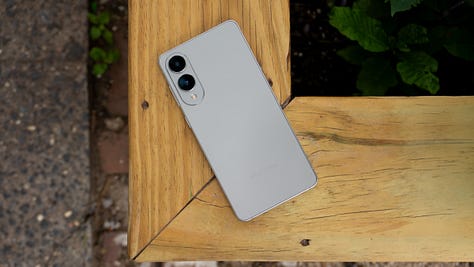

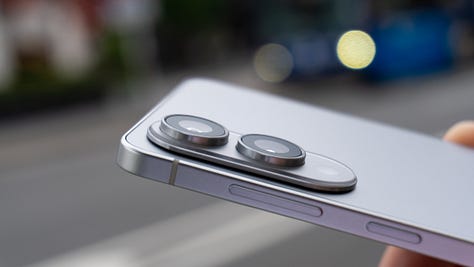
👀 Familiar looks. The aesthetic of the Galaxy S25 Edge has to align with the rest of the S25 family, and that’s exactly what it does. It looks a lot like the other phones in the lineup, save for the camera bump, which is a two-tiered island that adds a touch of extra thickness to the top left corner. Like the other S25 phones, the S25 Edge rocks on a table because of it. You also get volume/power buttons on the side, a USB-C port on the bottom, a SIM tray, and dual-firing speakers. So, yeah, an S25 Plus that lost weight.
🪨 Durable and sturdy. Whenever I see a super-thin phone, I think about whether it can bend in half or not. Luckily, that won’t be happening with the S25 Edge. The phone is sturdy and well-built thanks to its titanium frame, and it’s equipped with strong Gorilla Glass Ceramic 2 to protect the screen. Plus, it’s IP68 certified for dust and water resistance.
🌈 Limited colors. If you like vibrant colors, you probably won’t vibe with the Galaxy S25 Edge colors. There are three to pick from: Titanium Icyblue, Titanium Silver, and Titanium Jetblack, all of which look more metallic in person than you might like. Those who want a bold look will want to shop for a Galaxy S25 or S25 Plus, which comes in snazzy finishes like Navy and Coral. I have the Titanium Silver S25 Edge, and it just looks silver, which is boring.
Display
😍 The same beautiful panel as the Plus. The Galaxy S25 Edge and S25 Plus share the same 6.7-inch AMOLED display. I was impressed by it when I reviewed the S25 Plus a couple of months ago, and my impression remains the same with the Edge. It’s a stunning screen with a Quad HD+ resolution, 120Hz refresh rate, and 2,600 nits of brightness. It’s impossible to take issue with such a pretty display. Unless the size isn’t right for you, there’s nothing here to dislike.
Cameras
📸 More resolution, less versatility. The cameras on the Galaxy S25 Edge are very good, just like they are on the Galaxy S25 and S25 Plus. The big difference between those phones and the Edge is that Samsung threw in the same 200MP camera that’s on the S25 Ultra, giving it a lot more resolution to play with. On the other hand, the telephoto lens from the regular S25 is gone, with a lone 12MP ultra-wide below the main lens. The result is a camera system that’s less versatile than what you’d find on the rest of the S25 lineup, but is still plenty capable of good photos.




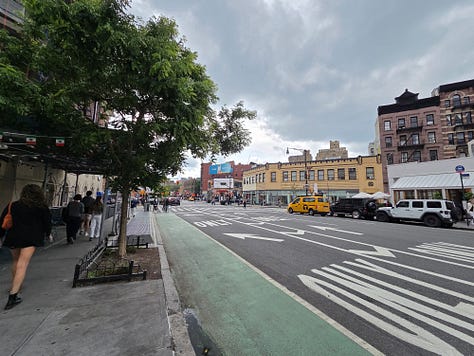




Main: The primary 200MP camera takes gorgeous photos in a variety of lighting conditions. It’s the same sensor from the S25 Ultra after all, so it makes sense that it can kick out some killer shots. Colors are still a bit oversaturated for my liking, and contrast can be a bit wacky when there are a lot of shadows in a single frame. But overall, the S25 Edge can easily keep up with the iPhone 16 Pro and Pixel 9 Pro XL from a photography standpoint.
Ultra-wide: The 12MP ultra-wide lens is a decent shooter, although it can’t let in as much light as the main camera. As a result, photos at dusk or at night don’t come out as good, and the amount of detail that’s captured can’t compare to what the main lens is capable of. It’s good if you want to fit a bunch of people in the frame, but it’s otherwise best to rely on the main camera for your Instagram photos.
Selfie: The 12MP selfie camera is pretty good, although I find color and brightness to be a bit strange at times. Selfies look overprocessed no matter where I take them, which makes this lens less desirable to use than I was expecting.
Video: Capturing 4K video with the main lens on the Galaxy S25 Edge is a pretty great experience. You’re guaranteed to get a good-looking clip from the sensor that doesn’t look too overprocessed or oversaturated. I still find video quality to be best on the iPhone 16 Pro Max, but the S25 Edge gives it a run for its money. I can’t say the same about video quality on the ultra-wide or selfie cameras, though, as too much processing is brought in to try and maintain the same quality, ultimately failing to do so.
Vibe check: These cameras are good, don’t get me wrong. But you don’t buy the S25 Edge for its cameras. While it’s nice that Samsung threw in the same main camera as the Ultra, it’s more of a concession than a thought-out feature. You buy this phone for the form factor, sort of how you buy a foldable phone for its form factor. Cameras have to come second in that buying decision, and that’s how Samsung’s positioned the Edge. You shouldn’t rush out to get this phone because of the photos and videos it takes - you’ll get better results on the S25 Ultra, Pixel 9 Pro, and iPhone 16 Pro. But if you wind up with this phone in your pocket, you won’t be disappointed by its photography chops.
Performance
🏎️ Top-tier speeds. If you pay upwards of a thousand dollars for a phone in 2025, it needs top-tier performance. Luckily, Samsung didn’t skimp out here. The Galaxy S25 Edge uses the same Snapdragon 8 Elite for Galaxy processor as the rest of the S25s, which translates to reliably fast performance no matter what you’re doing. From gaming to multitasking to checking your email, the phone is fast and responsive.
💾 Enough RAM and storage for 2025. That top-tier performance is also thanks to the 12GB of RAM Samsung includes, which is plenty for keeping your apps from crashing or reloading in the background. You also get a choice between 256GB or 512GB of storage, which is enough for most people. If you need more than 512GB, you’re out of luck, but there’s always the S25 Ultra for that.
🥵 A bit hot at times. The S25 Edge tries its best to keep cool thanks to an ultra-thin vapor chamber inside, and for the most part, it works well. Light tasks aren’t enough to heat things up, and most games can keep their cool, too. However, if you’re using the phone in spotty cellular coverage or on full brightness in direct sunlight, it can warm up quickly and feel uncomfortable to use. There’s only so much Samsung can do to keep such a thin phone from overheating, and its physical limits show themselves once in a while.
Battery life
🪫 The ultimate sacrifice. Samsung decided that thin phones deserve small batteries, despite the existence of new technologies like silicone-carbon batteries that allow for higher capacity batteries in small form factors. We saw OnePlus add a whopping 6,000mAh cell to the OnePlus 13 earlier this year, yet when it comes to the S25 Edge, Samsung could only cram in a 3,900mAh cell. That’s smaller than what’s in the Galaxy Z Flip 6, and as a result, it can’t last all day. I’ve had days with lighter usage, days with heavier usage, and days somewhere in the middle of it all, and the phone always dies before I go to sleep (roughly 13-14 hours after I wake up). It’s by no means a two-day phone, and if you like taking lots of pictures or streaming music throughout the day, you’ll struggle to get through a single day on a full charge.
⚡ Charging could be faster. It takes over an hour to charge the Galaxy S25 Edge from zero to 100%, which seems silly given the size of the battery. That’s because Samsung includes 25W wired charging, which is much slower than the 45W charging speed of the rest of the S25 line. Is this a dealbreaker? Not necessarily, if only because iPhones and Pixel phones still charge at below 30W. Still, it would’ve been nice to see a boost in charging performance here.
🧲 No Qi2 (unsurprisingly). The S25 Edge doesn’t come with magnets on the back for Qi2, which makes the phone technically “Qi2 ready” since it can wirelessly charge at 15W. We haven’t seen almost any Android phone ship with Qi2 magnets anyway, so it’s no surprise that Samsung left them off the Edge.
◀️ Reverse wireless charging is still here. You can juice up your earbuds with reverse wireless charging on the S25 Edge, although it’s probably not the best idea given how small the battery is. Regardless, the feature is there if you need it.
Software & AI
🤖 Galaxy AI presses on. I went over a lot of my thoughts on Galaxy AI in my S25 review, and after re-using some of these features on the S25 Edge, my opinions remain the same: it’s all kind of boring. You have writing and photo editing tools that are nice enough to have, Now Brief is still pointless to use, natural language support is still miles better than the robotic language we’ve all been using with voice assistants for years, and web summarizations are handy for quickly reading long articles on the go. Is any of this life-changing? No, but if you pick and choose what you need, it can be convenient from time to time.
📱 One UI 7 is clean and responsive. I’ve once again found myself enjoying using One UI 7. Samsung’s software has matured over the years to be less cartoonish, cleaner, and easier to use. While my favorite Android experience remains the one found on Pixel phones, this is a close second. It’s fast, fluid, and chock-full of a million and one features. It makes me excited to dive deeper into One UI 8 when it’s released.
7️⃣ Seven years of updates. Speaking of software updates, the Galaxy S25 Edge is promised seven years of upgrades, much like the rest of the S25 lineup. That’s great news if you plan to use it for years down the line, as you’ll always have access to the latest features and security patches. Maybe just swap out the battery if you want to use it longer than five years, y’know?
Tidbits
Here are some extra thoughts I had on the Galaxy S25 Edge during my review.
The fingerprint scanner is fast and accurate, like many Samsung smartphones.
As a guy who pays close attention to design, the off-center USB-C port bothers me a bit.
The vibration motor is far from the best I’ve used, certainly for a $1,100 phone. It feels too shallow and buzzy.
The speakers are disappointing, although you can’t expect much from such a thin phone.
Galaxy S25 Edge vs. Galaxy S25 Plus
🎖️ There’s an obvious winner. It’s the Galaxy S25 Plus. Look, don’t get me wrong – I love the thin and light design of the S25 Edge. But with the S25 Plus, you get more cameras, more battery life, the same performance, better color options, and a $200 discount. Unless you want the thinnest Android phone on the market, the S25 Plus is simply a better value.
Should you buy the Galaxy S25 Edge?
Yes, if…
✅ You want an ultra-thin Android phone
✅ You want a higher-resolution camera
✅ You love having a big, beautiful screen
✅ You need top-tier performance
✅ You don’t need all the fancy features on the Galaxy S25 Ultra
No, if…
❌ You want all-day battery life (get the Galaxy S25 Plus)
❌ You want more versatile cameras (get the Galaxy S25 Plus)
❌ You want to save money (get the Galaxy S25 Plus)
❌ You’re an iPhone user (wait for the iPhone 17 Air)
Max Buondonno is an editor at The Shortcut. He’s been reporting on the latest consumer technology since 2015, with his work featured on CNN Underscored, ZDNET, How-To Geek, XDA, TheStreet, Country Central, and more. Follow him on X @LegendaryScoop and Instagram @LegendaryScoop.



